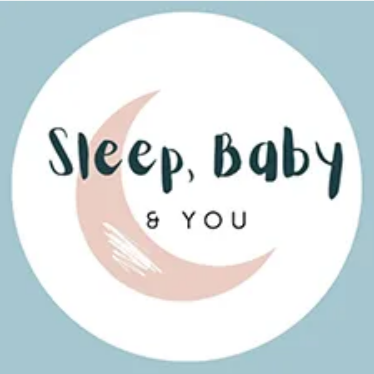Origins of Sleep Training
Why is sleep training a commonly offered infant sleep solution?
Sleep training, also referred to as behavioural sleep management, includes a wide range of methods that try to encourage your infant not to rouse (awaken and cry) during the night (Ball, 2025). On this page we will cover the origins of sleep training, the methods of sleep training, the research on if sleep training works and how such research has been conducted, and the potential costs of sleep training. We also discuss other options to cope with sleep disruption besides sleep training.
Why is sleep training a commonly offered infant sleep solution?
What are common sleep training methods?
What does the research aim to evaluate? What are the limitations of this research?
What are the potential downsides for you and your infant when sleep training?
Read about educational resources and programmes about infant sleep that aim to help parents
Since industrialisation there have been new pressures on families to return to scheduled work outside the home after the birth of their child, particularly in countries where maternity leave is short or non-existent (read more here) (Ball, 2025). These demands required parents to prioritise unbroken sleep, so as to able to return to full efficiency in the workplace.
The idea that babies should sleep through the night by an early age is a cultural expectation that doesn’t align with infant biology (read more about baby sleep pressure here). At some point during their child’s infancy or childhood, many parents wonder whether there is something they could – even should – be doing to ‘help’ their baby sleep longer, deeper, better, or through the night. Exhausted parents seeking a remedy for night-wakings may turn to sleep training as an option, given it is offered as a solution to these problems.
The literature published since 1970 provides evidence that sleep training in general produces desired outcomes for one or more of the following: parental sleep, infant sleep, night-waking, infant signalling, maternal mental health (Mindell et al., 2006; Ball, 2025). However there are limitations to this research on sleep training and sleep behavioural management and downsides to using these methods.
The normal development of sleep patterns in children (neurodevelopmental and circadian maturation) is influenced by both ‘internal’ (e.g. temperament, medical issues) and ‘external’ (environmental) factors (Mindell et al., 2006). Behavioural ‘sleep training’ techniques are based broadly on modification of the latter, and tend to emphasise either reinforcement of desirable behaviour (e.g. positive routines), or avoidance of reinforcement of undesirable behaviour by parental ignoring (e.g. extinction).
Researching ‘sleep problems’ can be challenging as research often relies on parents reporting a sleep problem in their infant rather than a conclusive diagnostic criteria (criteria do exist, e.g. ICSD-3-TR, 2024).
Most of the research is performed on infants who sleep ‘normally’, i.e. within the normal clinical and demographic variation. The sleep ‘problem’ is the mismatch between how babies sleep and how parents want them to sleep. Given it is infant crying, not infant waking, that disturbs parents, many methods focus on managing crying, not sleep (Blunden et al., 2011).
Therefore, research largely considers if the sleep training method addresses parents’ concerns about their babies’ sleep.
Parental perspectives on whether a problem exists are influenced by parents’ education, physical and mental health, family structure and parenting style (Mindell et al 2006). Parents who perceive their infants’ sleep to be problematic are more likely to experience stress or depressive symptoms and have poorer self-reported health (Hughes et al., 2015).
The research on infant sleep behavioural management largely focuses on sleep training and largely reports behavioural success. However, few studies are directly comparable to others, and those that are comparable tend to be done by the same research team, using similar groups of participants. Drawing conclusions about the effects of using sleep training methods in one group of individuals based on studies done on another – quite different – group, is therefore extremely difficult (Liebregts et al., 2025).
We also need to be aware that for some participants, simply taking part in a research project can change the way they act or think about their infants’ sleep. One study, looking at parents’ experiences of a sleep training intervention, found that being in the project made some participants feel more determined to implement aspects of the method – including controlled crying – than they would otherwise have been. Implementing a sleep training method as part of a research trial was therefore more successful for changing the babies’ sleep than if participants had used the method alone without taking part in a research project (Tse and Hall, 2007).
That the vast majority of publications reporting on tests of sleep training methods produce ‘positive’ results raises the question of whether studies that produce negative results get published at all (known as publication bias). How many studies have examined sleep training methods that haven’t worked? We have no way of knowing.
A systematic review of nineteen articles about unmodified extinction sleep methods found that only 2/19 studies included infants under the age of six months, with 17/19 focusing on ages 1-5 years (Gordon, 2023). Similarly only 7/27 studies on graduated extinction methods included babies under the age of 6 months (Gordon, 2023).
Studies that included babies under the age of 6 months found that practical outcomes were small or non-existent, had no significant impact on sleep, and effects wore off after a few weeks (Gordon, 2023).
Overall, there is good evidence that sleep training methods can improve parental mood disorders, or change (parental reports of their) babies’ sleep patterns in the short term. Evidence that sleep training actually helps babies to sleep better or longer is scarce. It is also not clear what other — unintended — longer term consequences of such training might be. Sleep training an infant under the age of a year may require multiple attempts and is argued to be excessively harsh by some researchers (Gerhardt, 2004; Ball, 2025).
From what is known as a ‘behaviourist’ point of view, sleep training methods work by either rewarding or encouraging desirable behaviour (e.g. using bed-time routines to help babies learn it is sleep-time), or by not-rewarding undesirable behaviour (ignoring babies when they cry in the night). Since a wakeful baby who does not disturb their parents is not usually considered to be a problem, it is no surprise that many of the most ‘effective’ sleep training methods have focused on managing babies’ crying, rather than their sleep per se. ‘Extinction’ methods – including Cry It Out and Controlled Crying (also called Controlled comforting) fall into this category.

‘Extinction’ methods require that both parents and babies break the link between crying and consistent parental response. This means breaking the link (responsive caregiving) that has evolved to ensure infant survival, which feels wrong to babies (they protest) and may feel wrong to parents.
The goal of most sleep training is increased sleep for parents and reduced waking (or crying) at night for babies (with the presumption of improved infant sleep). It is important to recognise potentially important consequences of artificially hastening babies’ sleep development processes.
The bond between mother and baby is supported through constant interaction — crying, touch, and eye contact. These interactions keep both mother and baby in a state of physiological synchrony.
For example, mothers and their babies initially show matching stress responses when babies cried at bedtime (Middlemiss et al., 2012). In a study, after three nights of “controlled crying,” the babies had stopped crying, but their stress hormone levels (cortisol) remained high, while their mothers’ had dropped (Middlemiss et al., 2012). This finding suggests that the babies hadn’t actually settled or stopped being stressed, they had simply stopped signalling distress.
A study of two-day-old newborns compared babies sleeping skin-to-skin on their mothers’ chests to those sleeping swaddled nearby in a bassinet (Morgan et al., 2011). The separated babies took longer to fall asleep, spent less time in quiet sleep, and showed signs of heightened arousal — even though they were close by. The findings suggest that even subtle forms of separation can have measurable physiological impacts on newborns.
These studies align with decades of research on other primates and mammals showing that maternal-infant separation can result in long-term stress and developmental challenges (Blum, 2003; Pryce et al., 2004, 2011; Leventopoulos et al., 2009). While more research is needed to fully understand the long-term effects in humans, what is clear is that a baby’s need for closeness, particularly during sleep, is not just emotional, but biological.
Research can help break down myths and help us understand how babies actually sleep. Acknowledging the following facts and accepting that sleep disruption is a normal part of looking after babies may make it easier to deal with.
Infant biology ensures that they will sleep enough for their development
(read more: infant sleep pressure).
All babies have different sleep needs that will change over time
(read more: infant sleep biology).
Behavioural sleep interventions only have small effects
(read more: sleep training research).
Professor Helen Ball recommends parents accept that babies will sleep how they want and that parental sleep disruption will occur. What parents can control is their understanding that most infant sleep patterns are normal, their understanding of infant sleep pressure (why babies get tired), and prioritising their own sleep where able. Here are some examples of how to cope with infant wakings and promote sleep when it allows you sleep as well (Ball, 2025):

As part of our research at Durham Infancy & Sleep Centre, the Basis team have developed a new approach for supporting parents with sleep for themselves and their babies. Sleep, Baby & You provides research-based tools and training for practitioners and resources for parents.
This programme is delivered by UK health care practitioners, so if you are a UK-based parent you can enquire in your local community if this training is offered by your local services. If you are an international based parent, consider the resources offered by Possums Sleep Program (Australia), with the updated 2024 version available at Dr Pam and NDC Institute. If you are a health care practitioner, please see our page where you can enquire about training in Sleep Baby and You.
Last Reviewed: July 2025